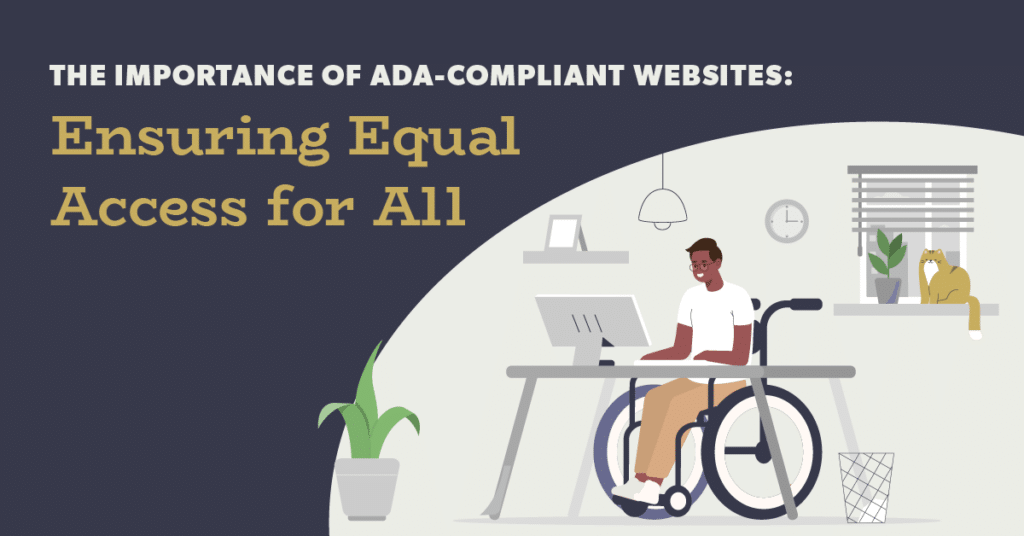In today’s digital age, websites play a crucial role in our daily lives. From shopping to entertainment to information-gathering, we rely heavily on the internet to meet our needs. However, not all websites are created equal, and some may inadvertently exclude people with disabilities. This is where the Americans with Disabilities Act (ADA) comes into play. In this blog post, we will discuss the importance of ADA-compliant websites and why they are essential for ensuring equal access for all.
What’s the Problem?
Many websites unintentionally exclude people with disabilities, which can limit their reach and usability. The Americans with Disabilities Act (ADA) is a federal law that prohibits discrimination against individuals with disabilities, including discrimination in the workplace, in public accommodations, and in telecommunications. In recent years, the ADA has been extended to the digital realm, with the Department of Justice ruling that websites must be accessible to people with disabilities.
The Risk of NOT Having an ADA-Compliant Website
Not having an ADA (Americans with Disabilities Act) compliant website can pose significant risks to businesses and organizations. The ADA requires that all public accommodations, including websites, be accessible to individuals with disabilities.
- Not having an ADA compliant website can lead to legal risks, including lawsuits, fines, and reputational damage which can be extremely costly.
- A non-compliant website can limit the reach and usability of the site for a significant portion of the population with disabilities. In the United States, there are about 61 million adults with disabilities, which is approximately 26% of the population.
- Lack of compliance can lead to decreased customer engagement, lost revenue, and a negative impact on brand reputation.
The Benefits of Having an ADA-Compliant Website
Ensuring that your website is ADA compliant has numerous benefits.
- Increasing accessibility for people with disabilities, which can lead to a larger customer base and improved brand reputation.
- Mitigate legal risks and avoid legal fees that can arise from non-compliance with ADA guidelines.
- Improving overall user experience for all users, including those without disabilities, by prioritizing clear and navigable website design.
- Prioritizing ADA compliance can ensure equal access to a website for all users while avoiding costly legal consequences and potential reputational harm.
Tools and Resources for ADA Compliance
Fortunately, there are great tools and resources available to check your website to make sure it’s up to ADA compliance. We offer a premium tool that does this and better yet, we can install it directly on your website. Enjoy peace of mind knowing that your website is protected and accessible to all!
How to Get Started?
Ensuring that your website is ADA compliant is not only the right thing to do, it’s also good for your business. By making your website accessible to all, you can improve your brand reputation, increase your customer base, and mitigate legal risks. If you’re not sure where to start, check out this convenient ADA tool that we can set up for you!









